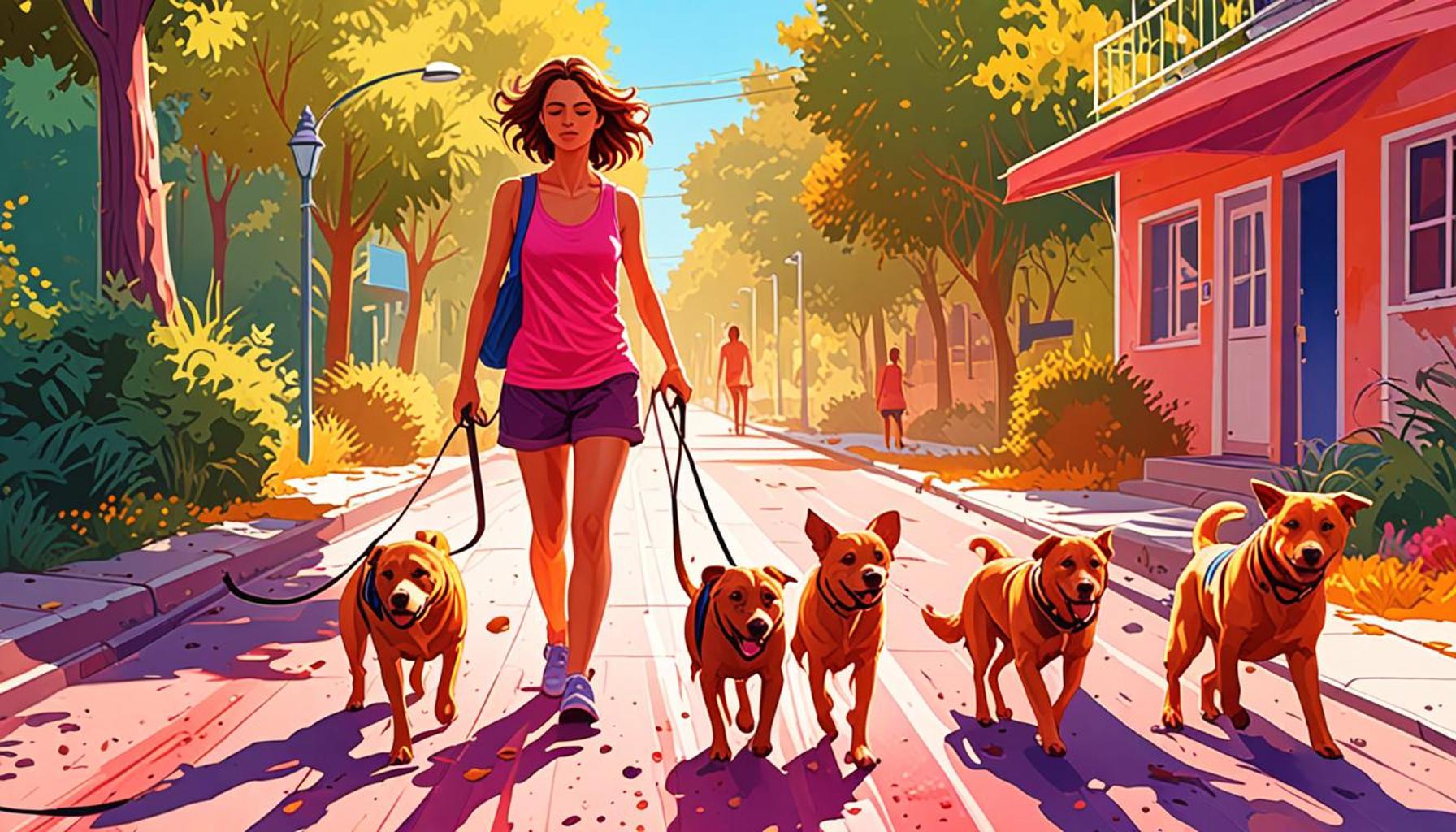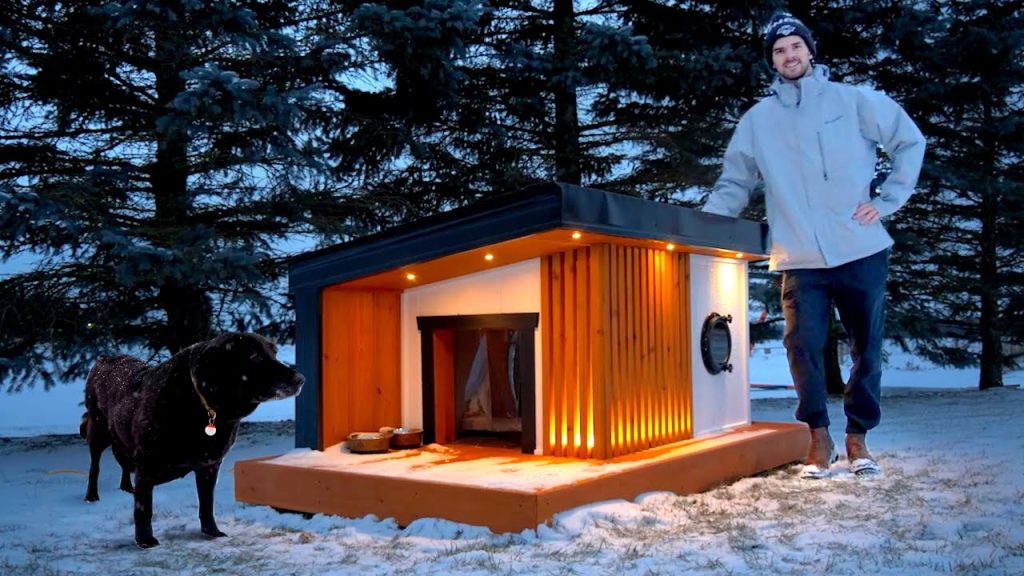How to Adjust Dog Walking Routines for Intense Heat Days

Keeping Your Pup Safe on Hot Days
With soaring temperatures, our loyal companions need extra care to ensure their health and happiness. Dog owners are called to adapt their walking routines and activity schedules to mitigate the risks associated with intense heat. Heat-related illnesses can develop rapidly in pets, making it vital to recognize the warning signs and take preventive action.
Why Adjusting Routines is Crucial
Several factors come into play when it comes to managing your dog’s safety in hot weather:
- Risk of Heatstroke: Heatstroke is a serious and life-threatening condition that occurs when a dog’s body temperature rises to dangerous levels, often above 104°F. Symptoms can escalate quickly, leading to confusion, seizures, and even death if not treated immediately. It’s critical to understand that brachycephalic breeds like Bulldogs and Pugs are particularly susceptible to heat-related issues due to their compromised airways.
- Paw Pad Burns: During summer, pavement temperatures can soar, often reaching levels hot enough to cause burns on your dog’s paws. To check if it’s safe to walk, place your hand on the pavement for seven seconds; if it’s too hot for your skin, it’s certainly too hot for their delicate pads.
- Increased Hydration Needs: Just like humans, dogs require more hydration in the heat. Ensure your dog has access to fresh water at all times, and consider offering ice cubes as a cool treat. It’s also a good idea to keep a portable water bottle and bowl on hand during walks.
Timing is essential. Early mornings and late evenings offer cooler temperatures and a more pleasant experience for both you and your dog. Consider splitting your usual walk into shorter segments throughout the day, allowing regular breaks for shade and water.
Signs of Discomfort
Awareness of your dog’s body language in hot weather can be a game-changer. Look out for these signs of distress:

- Excessive panting: While panting is normal, if your dog starts panting excessively or gulping air, it may indicate overheating.
- Drooling or foaming at the mouth: This could be a sign of heat stress, especially when coupled with other symptoms.
- Lethargy or difficulty standing: If your dog shows reluctance to move or appears unusually tired, it may need immediate relief from the heat.
Being attuned to these signals can help you act proactively. As summer days stretch on, ensuring your furry friend’s safety becomes a top priority. By incorporating strategies to keep them cool and hydrated, you can foster a more enjoyable and secure environment during those intense heat days. Remember, your awareness and adjustments can make all the difference in your beloved pet’s comfort and well-being this summer.
CHECK OUT: Click here to explore more
Smart Strategies for Maintaining Routine
As the temperature rises, dog owners are forced to rethink traditional walking schedules to ensure their pets remain safe and comfortable. Adjusting routines isn’t simply about altering the time of day for walks; it encompasses a comprehensive approach to your dog’s activity levels, environment, and overall well-being during the hot summer months. By implementing thoughtful strategies, you can maintain your dog’s exercise needs while protecting them from the dangers associated with extreme heat.
Redefining Walking Times
Timing is everything when it comes to walking your dog during hot weather. Instead of your usual mid-afternoon stroll, aim for early morning or late evening walks when temperatures are significantly lower. This strategic shift not only benefits your dog but also creates a more pleasant experience for you as well. Additionally, if your schedule allows for flexibility, consider splitting longer walks into two shorter sessions, limiting exposure to heat while still fulfilling your dog’s needs for activity and exploration.
Alternative Indoor Activities
On excessively hot days, it may be wise to forego the outdoor walks altogether. Instead, focus on enriching your dog’s environment indoors. Here are some activities you can engage in to keep your pup entertained and stimulated:
- Interactive Toys: Puzzle toys that dispense treats can keep your furry friend mentally engaged for hours. This can be a great alternative to physical exercise.
- Training Sessions: Use this time to teach your dog new tricks or reinforce obedience commands. Not only will it mentally stimulate them, but it also strengthens the bond between you and your pet.
- Indoor Agility: Set up a mini obstacle course in your living space using household items like chairs, cushions, and boxes. This can provide an exciting challenge for your dog while keeping them cool.
These alternatives can help mitigate the effects of rising temperatures on your dog’s physical and mental needs, ensuring they remain active without suffering from heat exhaustion.
Evaluate Your Walking Routes
Choosing the right route for your walks is essential. If the terrain involves asphalt or concrete, it’s vital to seek out shaded paths or grassy areas to minimize the risk of paw pad burns. Urban settings can be particularly hazardous on hot days, as they tend to trap heat. Whenever possible, opt for parks that have natural shaded environments or trails that offer a cooler atmosphere. Additionally, there are innovative tools available, like dog shoe booties, that can protect your dog’s paws from hot surfaces.
By proactively adjusting your walking routines, you not only prioritize your dog’s health but also reinforce the importance of their comfort during those sweltering days. As you navigate through the dog days of summer, consider these strategies to keep your beloved pet cool, safe, and happy.
As the temperature rises, ensuring your furry friend stays safe during walks becomes paramount. Adjusting your dog walking routines for intense heat days is critical to avoid heat-related health issues. Here are some key strategies to consider:
| Adjustment Strategy | Key Benefits |
|---|---|
| Early Morning or Late Evening Walks | Reduces exposure to high temperatures and prevents overheating. |
| Shorter and More Frequent Walks | Keeps your dog active while minimizing heat stress. |
| Utilizing Shade and Water Breaks | Helps to cool down your pet and refreshes them, extending outdoor time. |
| Choosing Cool Surfaces | Prevents paw pad burns and keeps dogs comfortable during walks. |
By implementing these adjustments, dog owners can maintain a safe and enjoyable walking experience even on the hottest days. Remember to observe your pet for signs of discomfort, such as excessive panting or lethargy. Prioritizing your dog’s well-being leads to happier, healthier outings.
Further tips include frequent hydration before, during, and after the walk, as well as knowing your dog’s breed characteristics—some may be more susceptible to heat than others. Stay informed and be proactive, adjusting walks to ensure your dog remains safe and loved throughout the summer.
CHECK OUT: Click here to explore more
Hydration and Safety: Essential Considerations
During intense heat days, the significance of hydration cannot be overstated. Dogs can quickly become dehydrated, particularly during outdoor activities. Always make sure to have water available and encourage your dog to drink before, during, and after walks. Portable dog water bottles with attached bowls are a fantastic investment for dog owners who like to be proactive. Carrying this convenient hydration solution allows you to offer your furry friend a refreshing drink whenever needed, significantly reducing the risks associated with dehydration.
Watch for Signs of Overheating
Understanding how to read your dog’s behavior is crucial during the hot summer months. Common signs of overheating include excessive panting, drooling, lethargy, and an unwillingness to walk any longer. If you notice any of these symptoms, it’s vital to immediately cool your dog down. Move them to a shaded area, offer water, and utilize cool cloths or ice packs on their paws and belly. Familiarizing yourself with these warning signs can save your pet from the potentially serious effects of heatstroke.
Cooling Gear and Accessories
Consider investing in specially designed cooling gear to help your dog stay comfortable during walks. Cooling vests, which are typically made from materials that retain moisture, can significantly drop your dog’s body temperature. Simply soak the vest in water and put it on your dog before heading out. Also, reflective gear is essential during evening walks to ensure visibility. Using a lighted leash and collar will help keep your dog safe in lower light situations where it may be difficult for motorists or other pedestrians to see you.
Shorter, More Frequent Walks
Rather than traditional long walks, consider implementing shorter, more frequent walks throughout the day. This can often be more beneficial for both you and your dog. Frequent breaks throughout the day allow them to enjoy fresh air and sunshine without the risk of extended exposure to heat. Another aspect of this adjustment includes letting your dog have several play sessions indoors or in a cooler part of your home, balancing between physical activity and relaxation. Engaging them in short bursts of exercise can keep their energy levels up while minimizing heat-related risks.
Health Considerations for Breeds
It’s essential to remember that some breeds are more susceptible to heat than others. Brachycephalic breeds, such as bulldogs and pugs, often struggle with overheating due to their short snouts and compromised breathing. Even senior dogs, or those with underlying health conditions, should receive special attention during extreme temperatures. Speak to your veterinarian about the safest walking routines and adjustments specific to your dog’s breed and health status. Customized advice will help you make the best choices for your four-legged companion.
By understanding and implementing these practices, dog owners can effectively navigate the challenges posed by extreme heat. This proactive approach not only fosters a caring relationship between you and your pets but also instills a sense of responsibility for their well-being, essential during sweltering summer months.
SEE ALSO: Click here to read another article
Conclusion: Keeping Your Canine Cool and Comfortable
As the temperatures soar, adjusting your dog’s walking routine is not merely a suggestion; it’s a necessity for their health and well-being. Implementing strategies such as shorter, more frequent walks, staying vigilant for signs of overheating, and ensuring constant access to water can make all the difference. With the right cooling gear and hydration tools, summer walks can transform from a daunting task into an enjoyable experience for both you and your furry companion.
Moreover, it is crucial to remember that different breeds have varied tolerances to heat. Conducting research on your dog’s specific needs and consulting with your veterinarian can provide tailored insights that elevate your approach to pet care. Additionally, finding safe, shaded areas for outdoor exploration or engaging in indoor activities can enrich your dog’s life while keeping them safe from harsh weather conditions.
Ultimately, being proactive and knowledgeable about your dog’s capabilities during extreme heat will foster better care and stronger bonds. By taking these considerations into account, dog owners can ensure that their pups remain safe, healthy, and happy throughout the summer months. Now, more than ever, it is our responsibility as caretakers to stay informed and make choices that reflect the love and devotion we have for our pets. With these adjustments, the hot days of summer can still be filled with joy and adventure.



